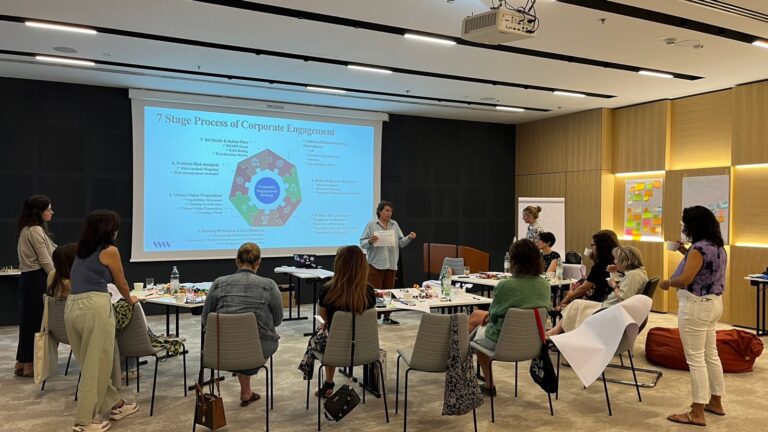This collaboration of six funds aims to address the lack of mechanisms for building sustainable funding ecosystems among women’s funds (WFs). The goal is to strengthen their growth strategies through mentoring, learning spaces, and meaningful engagement within the WF community.
Grounded in shared values of respect for diverse approaches, the collaborative focuses on sharing best practices in donor engagement, impact monitoring, and evaluation. The initiative seeks to advance the collective capabilities of WFs by learning from existing work and developing models of collaboration that promote intersectional feminism, anti-racist action, and non-capitalist economics.
This approach enables WFs to ground their actions in community-based methods with both movement partners and among women’s funds.
Inspiration
This collaboration addresses the need for collective political narratives and internal capacity building for resource mobilization, recognizing the crucial role of women’s funds in philanthropy.
New and innovative approaches to resource mobilization are needed to move away from traditional methods that are often inflexible and unsuited to the needs of women’s fund communities.
Key focus areas include diversifying funding sources by engaging individual donors, local giving, and the business sector. The group will also explore shared resource mobilization mechanisms to support WFs in mitigating risks and navigating social/political crises (e.g., reserve funds, endowments, pooled funds).
The collaboration aims to enhance skills and knowledge for attracting sustainable resources and building relationships for collaborative resource mobilization. While similar learnings have been pursued by other consortia, these insights have not been widely shared.
The Process
The long-term vision is to improve skills for leveraging sustainable resources for feminist movements. Objectives include developing new skills, capacities, and confidence in resource mobilization and gaining insights into the women’s funding ecosystem.
The collaborative will conduct a landscape analysis of the current funding situation, create a map for new funding sources, and share experiences and promising practices for corporate engagement tailored to various funds (national, sub-regional, multi-regional). Key activities include mapping funding opportunities, virtual and in-person trainings, and funder dialogues. Regular meetings will help identify funding gaps and develop strategies.
Toolkit
- A Steering Committee is composed of one representative from each member fund to ensure transparency and participation and works closely with a Program Manager to oversee the 27-month collaboration.
- Multiple funds receive portions of the grant, with collective oversight of budget decisions.
- Consultants are hired as needed for technical support in areas like facilitation, research, and marketing.
- Different members lead specific activities while maintaining a collective governance structure.
What Does Success Look Like?
- Developing a landscape map with promising practices and strategies for attracting new funding from corporate donors.
- Connecting with other collaboratives to share learnings and potentially participate in joint capacity-building activities.
- Documenting and sharing learnings to enhance public knowledge and strengthen the narrative on funding women’s rights, benefiting both women’s funds and grassroots organizations.
Between the lines
This is a large collaborative, which is constituted of diverse women’s funds, each operating in regions vulnerable to the impacts of military interventions and conflicts, political and economic crises, extreme climate events, and other crises. As WFs, they are used to navigating these external challenges, and when they arise their energies and efforts will necessarily need to be redirected to address them. They anticipate the collaborative members will communicate with each other as these issues emerge, including to explore opportunities for solidarity support, and renegotiating any planned activities.



